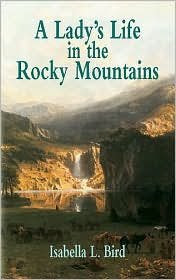
We're on our way to Paris next month, but we can't get to the "City of Lights" without first making a trip to the "Windy City." Visas are required for long-term stays and application must be made in person at a French Consulate. Lucky for us - our regional consulate is in Chicago. And as the song says, you can "bet your bottom dollar, you lose the blues in Chicago."
You can also find the blues in Chicago along with jazz, theater, a world-class art museum, renowned architecture and great restaurants and cafes - all in a stunning Lake Michigan setting. In December a cold wind blows, but, in spite of it, Chicagoans are hospitable and warm. It's a great big city with a small-town friendliness.
We drove into town on a Carl Sandburg kind of day with the fog obscuring the tops of the city's famous skyscrapers. After checking into our hotel (a Best Western with free, convenient parking in the River North section of town), we walked down Michigan Avenue to the Art Institute of Chicago. It's a perfect prelude to a trip to Paris since the museum houses one of the largest and most significant collections of Impressionist and Postimpressionist art in the world.
After the museum, it was off to Andy's, a Chicago jazz landmark on Hubbard Street. Andy's has early evening shows so you can take in some music before dinner. That's particularly handy if you have, as we did, an early-morning appointment at the Consulate. Dinner was at Quartino's, a large, lively Italian restaurant on State Street. Along with crisp fried calamari and tasty roasted octopus, we had a thin-crust pizza with duck pancetta and arugula that we would be happy to find in Italy.

During the night, the fog moved on and we awoke to clear, blue skies, frigid temperatures and the famous Chicago wind. Bypassing all the cookie-cutter Starbucks and Caribou Coffee shops, we stopped for an espresso at the Chicago Cultural Center, a beautiful, Tiffany-domed architectural landmark that once housed the City Library.
The French Consulate is across the street on the 37th floor of a modern office building with a spectacular view of the city and the magnificent dark green and gold Carbide and Carbon Building. Business complete, we soon found ourselves back in the brilliant sunshine of a blustery Chicago morning. Walking south through Grant Park, we were buffeted by the wind, but the Park belonged to us alone.
Thirty minutes later, we were in a tropical paradise with thousands of brilliantly-colored fish swimming inches from our eyes. Chicago's Shedd Aquarium is the world's largest indoor aquarium, but its position on the edge of Lake Michigan brings the outdoors in. Using floor to ceiling windows, the Aquarium borrows the seascape of Lake Michigan so that dolphins and beluga whales seem to leap not from the deep underground pools, but from the Lake itself.
Lunch was at the Aquarium's Soundings Cafe, which has a jaw-dropping panoramic view of Lake Michigan and the Chicago skyline. The cafe will surely be included in my book- should I ever write it - "World's Best Lunch Spots." (The title still needs work.) I can't remember if fish was on the menu, but the chicken sandwiches and salad with lime vinaigrette were fresh and delicious.
By late afternoon, after a whirlwind 28 hours in Chicago, we were back in our car on the Chicago Skyway, heading east toward Ann Arbor. Next stop - Paris.
To see more photos, click here.
A bientôt,
Geraldine



